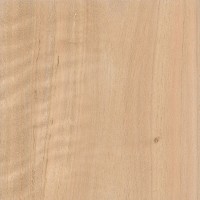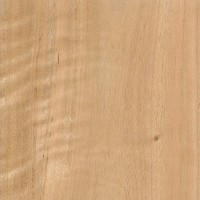 |
Common Name(s): Lemon-Scented Gum, Lemon Eucalyptus Scientific Name: Corymbia citriodora (syn. Eucalyptus citriodora) Distribution: Eastern Australia Tree Size: 65-130 ft (20-40 m) tall, 3-5 ft (1-1.5 m) trunk diameter Average Dried Weight: 59 lbs/ft3 (950 kg/m3) Specific Gravity (Basic, 12% MC): .75, .95 Janka Hardness: 1,910 lbf (8,510 N) Modulus of Rupture: 19,490 lbf/in2 (134.4 MPa) Elastic Modulus: 2,416,000 lbf/in2 (16.66 GPa) Crushing Strength: 9,600 lbf/in2 (66.2 MPa) Shrinkage: Radial: ~4%, Tangential: ~8%, Volumetric: ~12%, T/R Ratio: ~2 |
Color/Appearance: No data available.
Grain/Texture: No data available.
Endgrain: No data available.
Rot Resistance: No data available.
Workability: No data available.
Odor: Although the tree is called Lemon-Scented Gum (and for good reason), the wood itself has virtually no odor.
Allergies/Toxicity: Although severe reactions are quite uncommon, Lemon-Scented Gum has been reported to cause skin irritation. See the articles Wood Allergies and Toxicity and Wood Dust Safety for more information.
Pricing/Availability: No data available.
Sustainability: This wood species is not listed in the CITES Appendices or on the IUCN Red List of Threatened Species.
Common Uses: No data available.
Comments: So named for obvious reasons—the foliage of the tree can have a strong lemon smell. This species was formerly in the Eucalyptus genus, and was moved to the Corymbia genus in 1995.
None available.
Scans/Pictures: There are currently no pictures of this exact wood species, but a similar species within the Eucalyptus genus is being substituted (E. globulus). If you’d like to contribute a wood sample of this specific species to be scanned, (even small pieces of veneer can be sent), please use the contact form.
 |
 |




